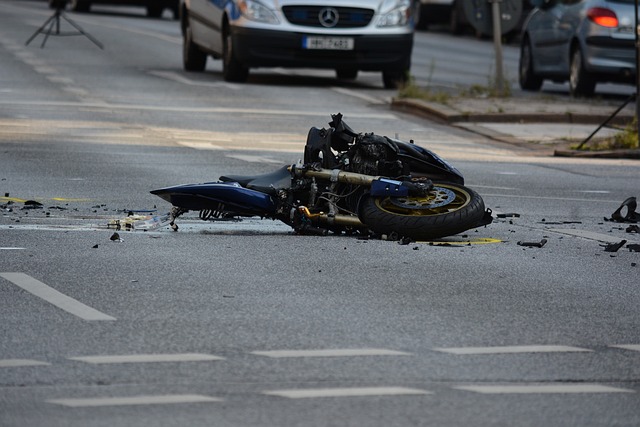Riding a motorcycle offers an unparalleled sense of freedom and connection to the road. However, this exhilarating experience comes with significant risks that demand respect and preparation. Every time you swing your leg over that saddle, you’re making a choice about your safety and survival.
The statistics surrounding motorcycle accidents paint a sobering picture. Riders are considerably more vulnerable than drivers enclosed in vehicles, making defensive habits not just recommendations but essential survival skills. Developing and maintaining proper safety practices can mean the difference between arriving home safely and becoming another tragic statistic.
Gear Up Like Your Life Depends on It
Your protective gear serves as your only barrier between skin and asphalt during a crash. A quality helmet is non-negotiable, reducing the risk of fatal head injuries by nearly forty percent. Always choose helmets that meet established safety standards and replace them after any impact.
Beyond helmets, a comprehensive gear setup includes a durable riding jacket, reinforced pants, gloves, and proper boots. These items might feel uncomfortable on hot days, but road rash and broken bones are infinitely worse. Invest in gear with built-in armor at critical impact points like shoulders, elbows, spine, hips, and knees.
Modern riding gear incorporates advanced materials that provide both protection and comfort. Look for abrasion-resistant fabrics, breathable mesh panels for ventilation, and reflective elements for visibility. Your gear represents an investment in your future, so prioritize quality over fashion or cost savings.
Master Defensive Riding Techniques
Assuming you’re invisible to other motorists is perhaps the most important mindset for motorcycle survival. Car drivers frequently fail to see motorcycles, whether due to blind spots, distraction, or simple inattention. Position yourself where you’re most visible and always have an escape route planned.
Maintain a generous following distance that gives you ample reaction time for sudden stops or obstacles. The two-second rule that works for cars should extend to at least three or four seconds on a motorcycle. This buffer zone provides crucial time to assess dangers and respond appropriately.
Never ride in another vehicle’s blind spot and use your horn liberally when you sense danger. Make eye contact with drivers at intersections whenever possible, as this dramatically reduces the likelihood they’ll pull out in front of you. Assume every car door might open and every vehicle might turn without signaling.
Keep Your Motorcycle in Peak Condition
Mechanical failure on a motorcycle can quickly become catastrophic, unlike in a car where you might coast to safety. Regular maintenance checks should become second nature before every ride. Inspect your tires for proper pressure and tread depth, as these directly impact your ability to brake and corner safely.
Check your brake fluid levels, test both front and rear brakes for responsiveness, and ensure all lights function properly. A burned-out brake light or turn signal compromises your ability to communicate with other motorists. Don’t forget to examine your chain tension and lubrication if your bike uses chain drive.
Schedule professional servicing according to your manufacturer’s recommendations, and address any unusual sounds, vibrations, or handling characteristics immediately. Your motorcycle’s reliability depends on consistent care, and shortcuts in maintenance often lead to breakdowns at the worst possible moments.
Ride Within Your Limits and Conditions
Overconfidence kills more riders than lack of skill. Every rider has limits determined by experience, physical condition, and current mental state. Pushing beyond these boundaries, especially to impress others or keep up with more experienced riders, invites disaster.
Weather conditions dramatically affect motorcycle handling and visibility. Rain reduces tire traction, creates slippery road markings and metal surfaces, and decreases visibility for everyone. Adjust your speed, increase following distances, and avoid sudden movements when conditions deteriorate.
Night riding presents unique challenges with reduced visibility and increased likelihood of encountering impaired drivers. Your reaction time decreases in darkness, and hazards like potholes become nearly impossible to spot until it’s too late. If you must ride at night, reduce speed and increase your alertness level.
Stay Sober and Focused
“Impaired riding remains a leading cause of motorcycle fatalities. Alcohol, drugs, and even certain medications affect judgment, reaction time, and coordination,” says T. Madden Associates, P.C., a renowned group of motorcycle accident lawyers.
The margin for error on a motorcycle is razor-thin, and any impairment exponentially increases crash risk.
Fatigue impairs your riding ability as much as intoxication. Long rides without breaks lead to decreased concentration, slower reactions, and poor decision-making. Stop regularly to rest, hydrate, and stretch. If you feel drowsy, find a safe place to rest rather than pushing through.
Distractions prove equally dangerous. Using phones, adjusting music, or eating while riding divides your attention when you need total focus. Keep your mind on the road, scanning constantly for potential hazards and changing traffic patterns.
Continuous Education and Skill Development
Completing a basic motorcycle safety course is just the beginning of your education. Advanced riding courses teach emergency braking, swerving techniques, and low-speed maneuvering that can save your life. These skills require practice to become instinctive responses during crisis moments.
Track days or controlled riding environments let you explore your motorcycle’s limits safely. Understanding how your bike handles in extreme situations builds confidence and muscle memory. This knowledge proves invaluable when you need to execute emergency maneuvers on public roads.
Learn from every ride by analyzing close calls and near-misses. What could you have done differently? How might you avoid similar situations? This reflective practice sharpens your hazard perception and decision-making abilities over time.
Understanding Traffic Patterns and Anticipation
Reading traffic flow helps you anticipate dangerous situations before they develop. Watch for telltale signs like wheels turning at intersections, brake lights ahead indicating slowing traffic, or vehicles weaving between lanes. These cues allow you to prepare appropriate responses.
Intersections represent the most dangerous locations for motorcyclists. Approach them with heightened awareness, covering your brakes and preparing to take evasive action. Left-turning vehicles pose particular threats, as drivers often misjudge motorcycle speed and distance.
Highway riding requires scanning far ahead to identify traffic slowdowns, lane closures, or debris. Position yourself strategically in your lane to maximize visibility and escape options. Use all your mirrors frequently to maintain awareness of surrounding traffic.
The Bottom Line
Motorcycle safety isn’t about luck or fate but conscious choices and disciplined habits. Every ride presents opportunities to practice these life-saving behaviors until they become automatic. The temporary inconvenience of proper gear, the discipline of defensive riding, and the commitment to continuous improvement all pay dividends in survival.
Your loved ones want you to return home after every ride. Honor that trust by treating motorcycle safety as the serious responsibility it is. The road offers incredible experiences, but only if you’re around to enjoy them for years to come.







Recent Comments